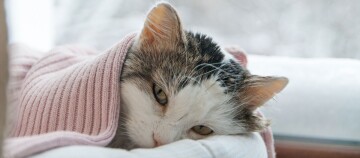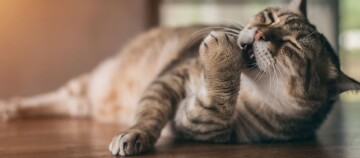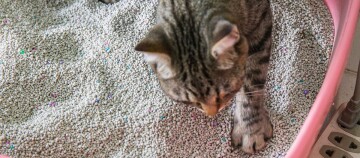Arthritis in Cats - Help Your Cat Live as Pain-Free as Possible
01.01.2024 - Reading time: 4 minutes
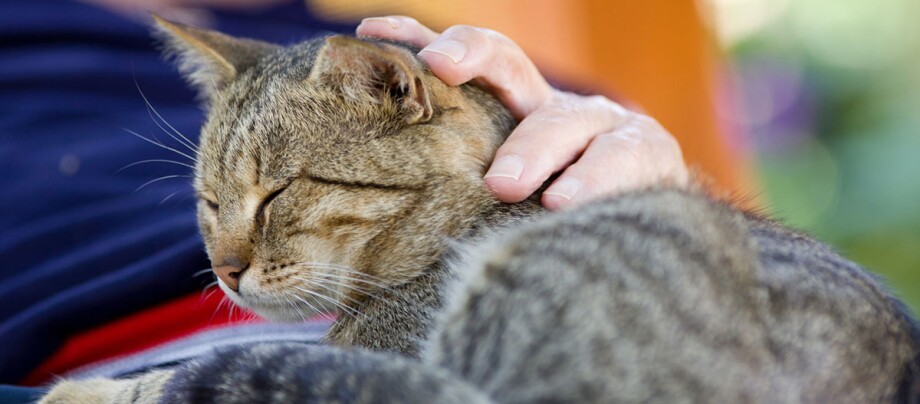
The years do not pass your cat by without a trace: When the once daredevil climber becomes more deliberate and only climbs the sofa with difficulty, the first signs of wear and tear on the joints have most likely set in. In order to accommodate the cat and enable it to live as pain-free a life as possible, you need a combination of medical measures and careful everyday aids.
How do joint problems develop in cats?
Osteoarthritis in cats is – as in humans – a comparatively typical disease of old age. In most cases, senior cats are acutely affected after the age of twelve. However, arthrosis damage can be seen on X-rays in about 90% of cats over the age of nine, even if the animals do not show any symptoms. The disease osteoarthritis causes irreversible wear and tear of cartilage and joints, which is usually a sign of age, but is also favoured by factors such as obesity, poorly healed injuries or growth defects. The parts of the body most commonly affected are the elbows and shoulders, followed by the knees and hips. The severity and extent of osteoarthritis in cats varies from animal to animal. However, arthritis pain is always chronic and reduces your cat’s quality of life. Osteoarthritis should therefore never be left untreated. Have you noticed the first signs on your cat? Before you head to your local vet’s office, you can make a stress-free online appointment with Dr. Maxi Zoo. The vets will take a look at your cat via video chat and give you an informed assessment.
You can prevent joint wear and tear by avoiding overweight in young cats and by providing stimulation and exercise for cats with a more leisurely character. The fitter the cat, the longer the condition of the joints will remain good. Keep in mind that osteoarthritis is a typical symptom of old age. Under certain circumstances, however, a younger animal can also suffer from joint wear and tear. The age of the cat is therefore not a definite exclusion criterion!
What is the difference between osteoarthritis and arthritis?
Osteoarthritis as joint wear and tear is clearly distinguishable from so-called arthritis. Arthritis is an inflammation of the joints that can be triggered by viral diseases, for example, regardless of age. In osteoarthritis as a degenerative joint disease, damage to the joint cartilage is caused by excess bone tissue, a thickening of the joint capsule and qualitative changes in the body’s own synovial fluid. The function of the joint is painfully restricted and altered as a result – the animal moves more hesitantly to avoid pain. Arthritis, on the other hand, can be caused by infections such as Lyme disease or rheumatism, and sometimes the cause is found directly in damage to the cartilage, whereby the organism interprets released cartilage components as foreign substances, which it then combats by causing inflammation in the joint. Osteoarthritis can trigger arthritis through acute damage to the cartilage and set a negative cycle in motion.
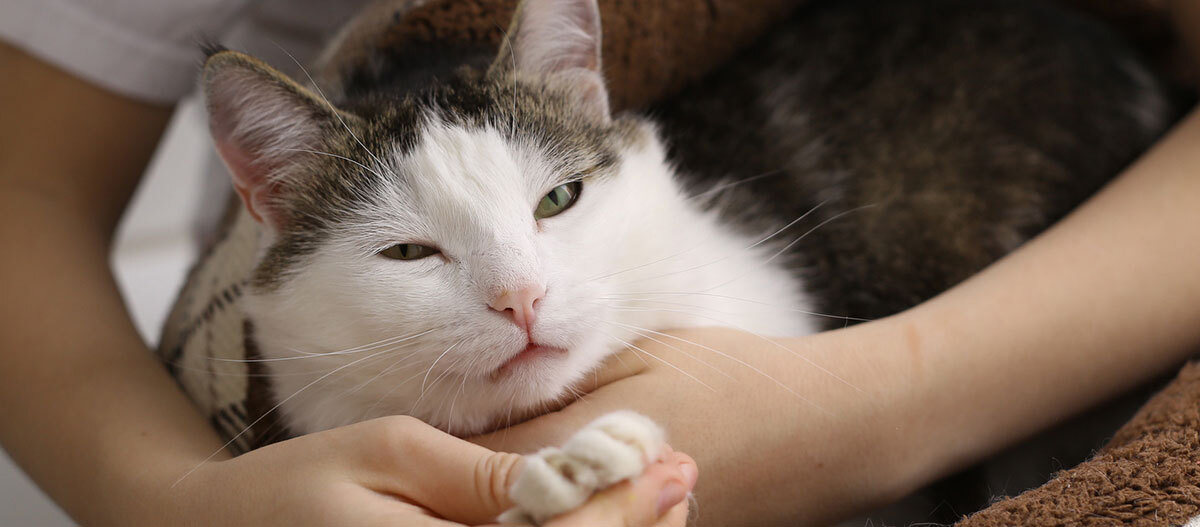
What are the symptoms of osteoarthritis?
Like many animals, cats avoid showing illness and pain for as long as possible. If you keep a close eye on your pet, you should also look out for small signs that may indicate arthritis or osteoarthritis. You can read more about these signs later in this article.
Advanced arthrosis is accompanied by impairments that can no longer be ignored, such as lameness, limping or limping. Especially when the cat has rested for a long time and rises, the stiffness becomes noticeable.
What is the treatment for osteoarthritis in a cat?
To treat the cat’s arthritis, the vet will suggest various pain-relieving methods – joint wear and tear cannot be cured.
The measures include:
- Pain therapy
- Physiotherapy
- Acupuncture
- Medication and feed supplements (against pain and anti-inflammatory)
Attention: Do not give your cat painkillers from your medicine cabinet: substances such as those found in paracetamol are deadly for the animal!
The effects of joint discomfort can be mitigated by putting an overweight cat on a diet. For age-related osteoarthritis, there are special senior cat foods and supplements such as green lipped muscle extract. This is commonly found as a supplement in osteoarthritis foods and contains natural glycosaminoglycans, amino acids, omega-3 fatty acids, vitamins and minerals, which together have a similar effect to anti-inflammatory drugs.
You can also help your disabled cat in everyday life: Make him as comfortable as possible by assisting him with personal hygiene and making his favourite places in the home accessible – what’s wrong with a cat staircase to the sofa for your senior cat? A warm, cosy place to lie down should also be available: Warmth relieves arthritis pain. If there are several, livelier cats in the house, make sure that the arthritis sufferer has a quiet place to retreat to.
